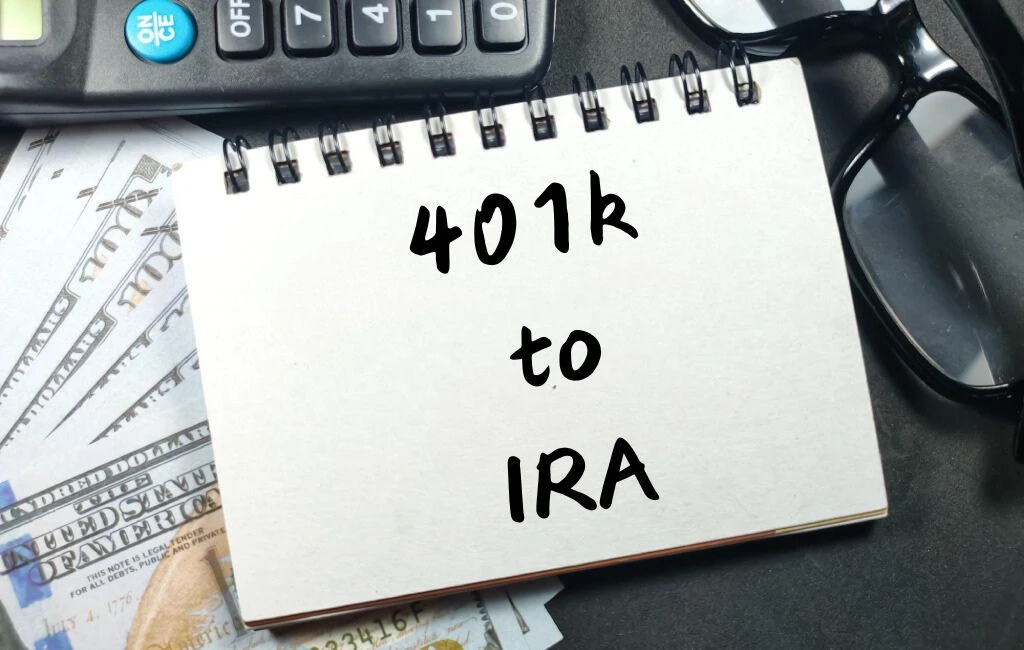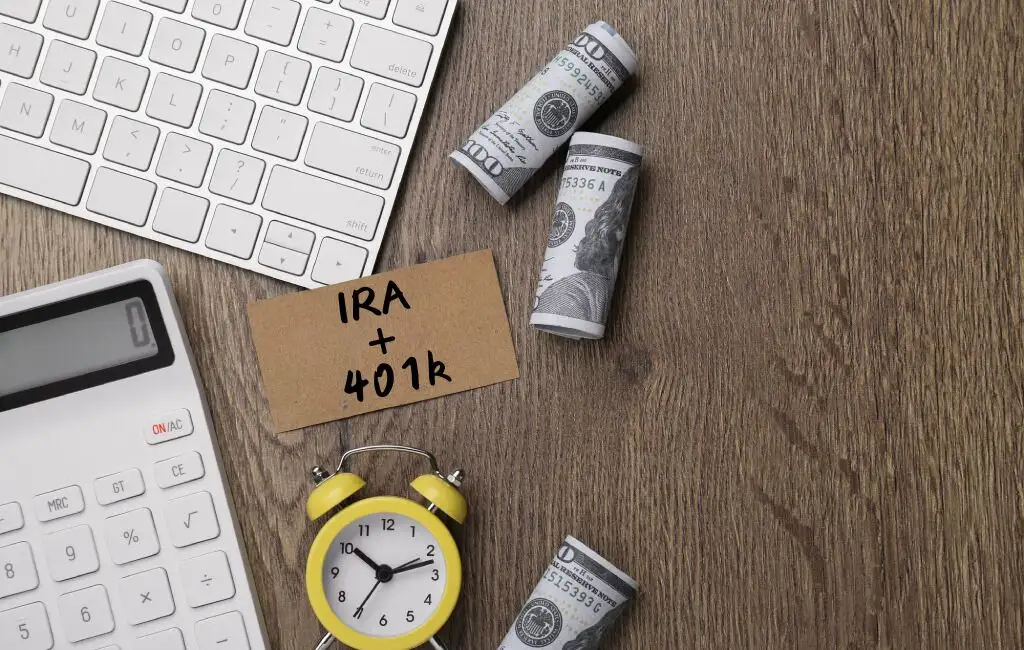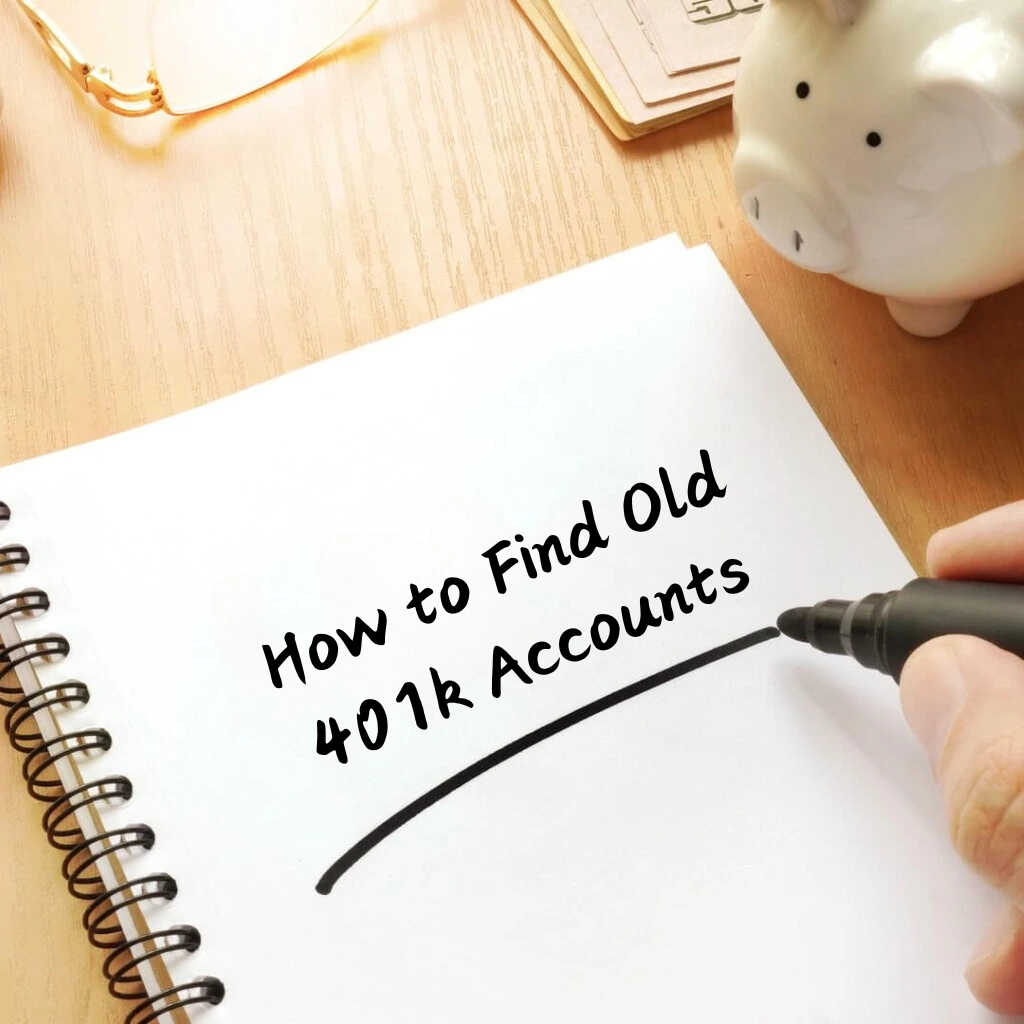In today’s job market, switching jobs every few years has become the norm rather than the exception. But while moving from one role to another may bring new opportunities and experiences, it can also leave a trail of retirement accounts that are easy to lose track of over time. Old 401k accounts are often left behind without a second thought, only to be rediscovered later—or worse, completely forgotten.
Asking, “How to find old 401k accounts?” is a question that signals you’re ready to take control of your financial future. Track down 401k accounts to reclaim forgotten funds, cut duplicate fees, and boost your retirement savings for a more secure future. This guide walks you through why 401k accounts are important, why people lose track of them, and provides practical steps to find, manage, and benefit from these accounts. Let’s dive in and make sure every dollar you’ve worked for is accounted for.
Why 401k Accounts are Important
A 401k is a powerful way to save for a secure retirement. If you’ve lost track of an old account, it’s important to know how to find old 401k accounts. Here’s why 401ks matter:
Tax Benefits: Contributions to a 401k are made with pre-tax dollars, meaning they reduce your taxable income each year you contribute. This structure allows your savings to grow tax-free until retirement. Over time, this tax-deferred growth leads to substantial compounding, giving you more savings without the impact of annual taxes on your gains.

Employer Matching: Many companies match a portion of employee contributions, essentially giving you “free money” toward your retirement. For example, if your employer matches 50% of your contributions up to a certain percentage, they’re helping to grow your savings at no additional cost to you. Over the years, these contributions can significantly increase your retirement balance, making matching one of the most valuable features of a 401k.
Investment Growth Opportunities: Unlike traditional savings accounts, a 401k lets you invest in a range of assets, such as mutual funds, stocks, and bonds. Historically, these investments yield higher returns than basic savings options, and over decades, the compounded growth can create a sizable retirement fund. This growth is especially impactful as it compounds over the years, amplifying the effect of even modest contributions.
Encourages Early Savings Habits: The 401k framework encourages employees to start saving as soon as they enter the workforce, which is crucial for building wealth over time. Even small, consistent contributions made early in your career can grow impressively thanks to compound interest, which is why starting early is a major advantage.
Provides Long-Term Security: With retirement planning, security is key, and a 401k offers exactly that. A well-funded 401k is a stable source of income for retirement, especially given the uncertainty around Social Security benefits. By consistently contributing to and managing your 401k, you’re laying a solid foundation for a financially secure retirement.
The importance of 401k accounts lies not just in its tax benefits and potential growth, but also in the peace of mind it provides for a stable retirement. By actively managing these accounts, including any from previous employers, you can ensure every dollar works toward a secure future.

Why People Lose Track of 401k Accounts
Despite the critical role 401k accounts play in retirement planning, many people lose track of them. Here’s why this happens so often:
Frequent Job Changes: The average American changes jobs about 12 times in their career, and each job often means a new 401k. Without consolidating or transferring funds, it’s easy to leave these accounts behind as job changes stack up.
Corporate Restructuring and Mergers: Employers undergo mergers, acquisitions, or rebranding, which often results in a change of 401k provider. These transitions can make it challenging for former employees to track where their retirement funds are being held.
Outdated Contact Information: Once you leave a job, you’re not receiving regular updates from the HR department. If you haven’t updated your contact information with the 401k provider, you might miss out on important statements, and accounts can gradually slip through the cracks.
Assumptions About Automatic Transfers: Some people assume that their 401k will be automatically transferred to a new employer’s plan or that they’ll be notified about their options. In reality, old accounts typically remain with the original provider unless you take specific action.
Forgotten Logins and Account Details: Forgotten passwords, misplaced account numbers, or old employer portals can make it difficult to access a 401k. Without proper records, people often lose access entirely.
These factors contribute to why so many 401k accounts go missing. Fortunately, with a systematic approach, these accounts can be recovered and managed effectively.
Benefits of Finding and Managing Your Old 401k Accounts
Managing your old 401k accounts unlocks valuable 401k benefits that can boost your retirement plan.
Boost Your Retirement Savings: Reclaiming lost funds adds to your overall retirement nest egg. Even smaller balances grow over time, thanks to investment gains and compounding interest, making every dollar count.

Greater Investment Control: Many old accounts are left unmanaged, limiting growth potential. Consolidating or actively managing these accounts lets you tailor your investment strategy to align with your goals and risk tolerance.
Lower Fees and Increased Efficiency: Various 401k plans carry different fees, and some may be costly. Consolidating into a single, low-fee IRA or 401k can reduce administrative expenses, leaving more of your money invested.
Simplified Management: Juggling multiple accounts can be time-consuming and confusing. Consolidating everything into a single IRA or current employer’s 401k offers an organized approach, making it easier to monitor and adjust your investments.
Reduced Complexity for RMDs: At age 72, you must start taking Required Minimum Distributions (RMDs). Managing multiple accounts adds to the complexity and risks missing RMDs, which could lead to penalties. A single, consolidated account streamlines this process.
Tracking down and consolidating old 401k accounts simplifies retirement planning, reduces fees, and enhances investment control—ultimately setting you up for a more secure financial future.
How to Find Old 401k Accounts: Step-by-Step Guide
If you’re ready to locate forgotten 401k accounts, these steps will guide you through the process.

Step 1: Review Employment Records
Gather Old Pay Stubs and Tax Documents: Start by reviewing any pay stubs or tax documents from your previous jobs. Pay stubs may indicate 401k contributions, and tax documents like W-2s can reveal retirement plan details.
Contact Your Former Employers’ HR Departments: Many employers keep 401k records, even if you left years ago. Reach out to the human resources or benefits department, and they can provide the details of your 401k provider.
Step 2: Search the National Registry of Unclaimed Retirement Benefits
Access the Registry Website: The National Registry of Unclaimed Retirement Benefits allows you to search for forgotten 401k accounts using your Social Security number. This is a particularly useful resource if you don’t remember your former employer or provider.
Step 3: Reach Out to the Plan Administrator
Contact the Plan Provider Directly: If you remember the name of your 401k provider—such as Fidelity, Vanguard, or T. Rowe Price—contact them directly. Most providers can look up your account if you provide identifying details like your Social Security number, employment dates, and employer name.
Step 4: Use the Department of Labor’s Abandoned Plan Database
Search the Abandoned Plan Database: The Department of Labor (DOL) maintains a database of abandoned 401k plans. Accounts may be transferred here if employers are no longer administering them. This database can provide contact details or custodian information for these unclaimed accounts.
Step 5: Leverage 401k Rollover or Transfer Services
Use Services Offered by Financial Institutions: Financial institutions like Fidelity, Schwab, and Vanguard often offer assistance in tracking down and rolling over old 401k accounts. This can be especially useful if you have multiple accounts to consolidate.
Step 6: Examine Old Financial Statements
Review Bank and 401k Statements: Old financial statements, even if they’re from years ago, can reveal information about 401k balances, account numbers, and provider contact information. Don’t forget to check any digital records if you used an online portal for statements.
These steps will bring you closer to locating your old 401k accounts. Be ready to provide identification, employment details, and follow up as necessary to recover these accounts fully.
What to Do After Finding an Old 401k Account
In the section above, we covered how to find old 401k accounts step by step. Now that you’ve found one, it’s time to figure out your next move. Here’s what to keep in mind:
1. Consider Consolidation or Rollover Options
401k to IRA Rollover: Rolling over your old 401k to an IRA offers increased investment flexibility, including individual stocks, ETFs, and a range of other options. IRAs also tend to have lower fees, depending on the provider.

Consolidate with Your Current Employer’s Plan: If allowed, rolling over old accounts into your current employer’s 401k simplifies management. You’ll have one provider, one portfolio, and fewer administrative tasks.
Leave It in Place (If It’s Beneficial): If the fees are low and the investment options are favorable, you may choose to keep the account as is. This approach can make sense if it offers unique investment options or lower fees than alternatives.
2. Evaluate Fees and Investment Options
Examine Fee Structures: Understanding your account’s fees is essential for maximizing your retirement balance. Look for administrative fees, management fees, and other costs associated with your account, as high fees can eat away at your returns.
Review Investment Choices: Evaluate the investment options in your account to see if they align with your retirement goals. If the investment options are limited or costly, consider rolling over to an IRA for more flexibility.
3. Update Beneficiary Information
Confirm Beneficiary Designations: Life changes such as marriage, divorce, or having children may affect who you want to designate as beneficiaries. Updating beneficiaries ensures your funds go to the intended recipients in the event of your passing.
Ensure Contact Information is Current: Avoid losing track of the account again by keeping your contact information updated with the provider. This is especially important to receive updates and account statements regularly.
Once you’ve made your decisions, take action to manage or consolidate your old accounts, including how you manage 401k accounts.
Tips for Managing Multiple 401k Accounts
If you’re juggling multiple 401k accounts, keeping everything organized and efficient is key. Here are some practical tips to help you manage them effectively:

Consolidate to an IRA or Your Current 401k: Combining old accounts into a single IRA or rolling them into your current employer’s 401k plan simplifies your financial landscape. By consolidating, you’ll have just one account to monitor, which reduces paperwork and streamlines both investment planning and long-term management. An IRA can be particularly advantageous since it often offers a wider range of investment options and potentially lower fees compared to many 401k plans. Just make sure to compare fees and investment choices before deciding where to consolidate.
Use Account Aggregation Tools: Financial platforms like Mint, Personal Capital, and other retirement-focused tools allow you to view and track all of your accounts in one place. This consolidated view helps you keep tabs on each account’s balance, performance, and fees, making it easier to adjust investments if needed. These tools also provide insights into your overall retirement progress, letting you see where your combined accounts stand in relation to your retirement goals.
Regularly Review Performance and Fees: Review each account at least once a year to check its investment options, performance, and fees. Different accounts may charge different fees, and even a small difference can add up significantly over time. Reviewing your accounts regularly ensures you’re not paying more than necessary and that each account aligns with your broader financial strategy. By consistently monitoring performance, you can make timely adjustments to maximize returns or reduce risks as needed.
Keep Beneficiary Information Up to Date: Periodically review and update the beneficiary designations on each account, especially if you’ve had life changes like marriage, divorce, or children. Outdated beneficiary designations can lead to unintended complications, so ensure your account reflects your current wishes. This is a simple yet crucial step that can prevent potential legal challenges or family disputes down the road.
Managing multiple 401k accounts can be complex, but by consolidating when possible, using aggregation tools, reviewing performance, and keeping beneficiary information current, you can simplify your finances and stay in control of your retirement planning. These steps will save you time, reduce fees, and ultimately make it easier to reach your retirement goals.
Common Mistakes to Avoid When Searching for Old 401k Accounts
Tracking down old 401k accounts is a smart move, but it’s easy to slip up. Here’s how to avoid 401k errors:

Assuming Accounts Automatically Transfer: Many people mistakenly believe their funds will seamlessly transfer to a new employer’s 401k plan. Unfortunately, this isn’t the case; old 401k accounts typically remain with the original provider until action is taken. Leaving these accounts unattended can lead to missed opportunities for growth, so it’s essential to check the status and transfer them yourself if desired.
Ignoring Beneficiary Information: Life changes like marriage, divorce, or children can make it essential to update the beneficiaries on your 401k accounts. Failing to do so could result in funds being distributed against your wishes. As soon as you locate your old accounts, verify and update the beneficiary details to ensure your savings go to the intended individuals.
Overlooking Account Fees: Each 401k account has unique administrative and investment fees, which can vary greatly. If you don’t evaluate and compare fees, you may find yourself paying more than necessary. High fees can eat into your retirement savings, so consider consolidating accounts into one with lower fees if possible. This small step can make a significant difference over time, helping your funds grow faster.
Missing Rollover Deadlines: If you’re transferring funds, be mindful of IRS rules on timing. Failing to meet rollover deadlines could lead to taxes or penalties, reducing the value of your retirement savings. For a successful rollover, ensure you’re fully aware of the 60-day window to complete the transfer, as missing it can be costly.
Forgetting to Consolidate Small Accounts: It’s common to leave behind small 401k balances, thinking they won’t make a difference. However, even small accounts add up over time. Consolidating them into one account simplifies management and can reduce fees, allowing your retirement savings to grow more efficiently.
Avoiding these common errors will help you streamline the process of reclaiming your 401k funds, reduce fees, and ultimately maximize the growth of your retirement savings. By taking a proactive approach and addressing these issues, you’ll set yourself up for a smoother and more rewarding financial future.
Conclusion
Finding old 401k accounts might feel like a treasure hunt, but it’s a hunt worth every effort. These accounts hold funds you worked hard to save, and each dollar adds up, bringing you closer to a secure retirement. By tracking down, consolidating, and actively managing these accounts, you’re reclaiming money that’s rightfully yours—funds that can significantly enhance your retirement nest egg.

The process of locating old 401k accounts and understanding how best to manage them is more than just an administrative task; it’s a powerful step toward financial clarity and control. Consolidating accounts reduces the headache of juggling multiple portfolios, potentially lowers fees, and lets you build a unified, strategic investment plan. With everything in one place, it’s easier to monitor performance, make adjustments, and know exactly where you stand on your retirement journey.
Managing old 401k accounts also ensures your records are current, beneficiaries are up-to-date, and every dollar is working efficiently. The effort you put into finding and organizing these accounts now will pay off, giving you more peace of mind and confidence as you approach retirement. Think of it as setting up a firm foundation for your future, one that makes your golden years more financially secure and fulfilling.
Start the search for your old 401k accounts today. With each account you find and optimize, you’re actively investing in a stronger financial future. Learning how to find old 401k accounts helps you track down your hard-earned money and put it back to work for you.








